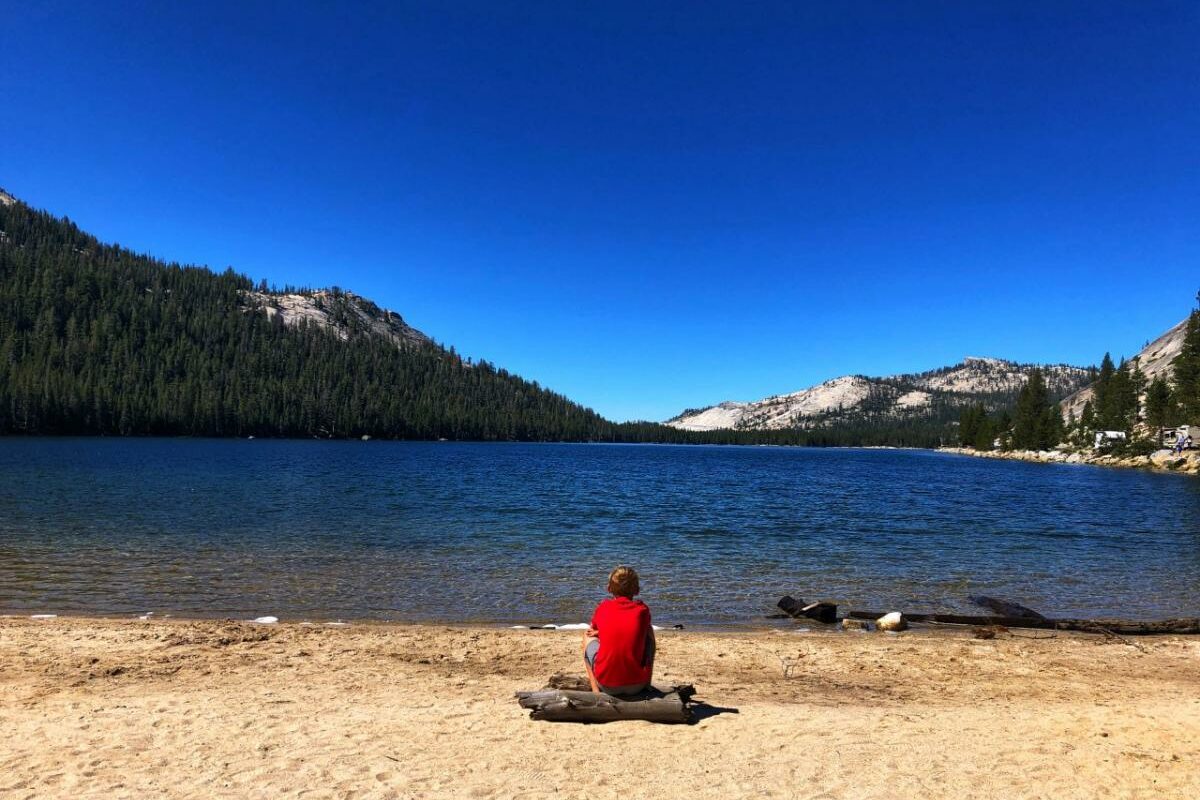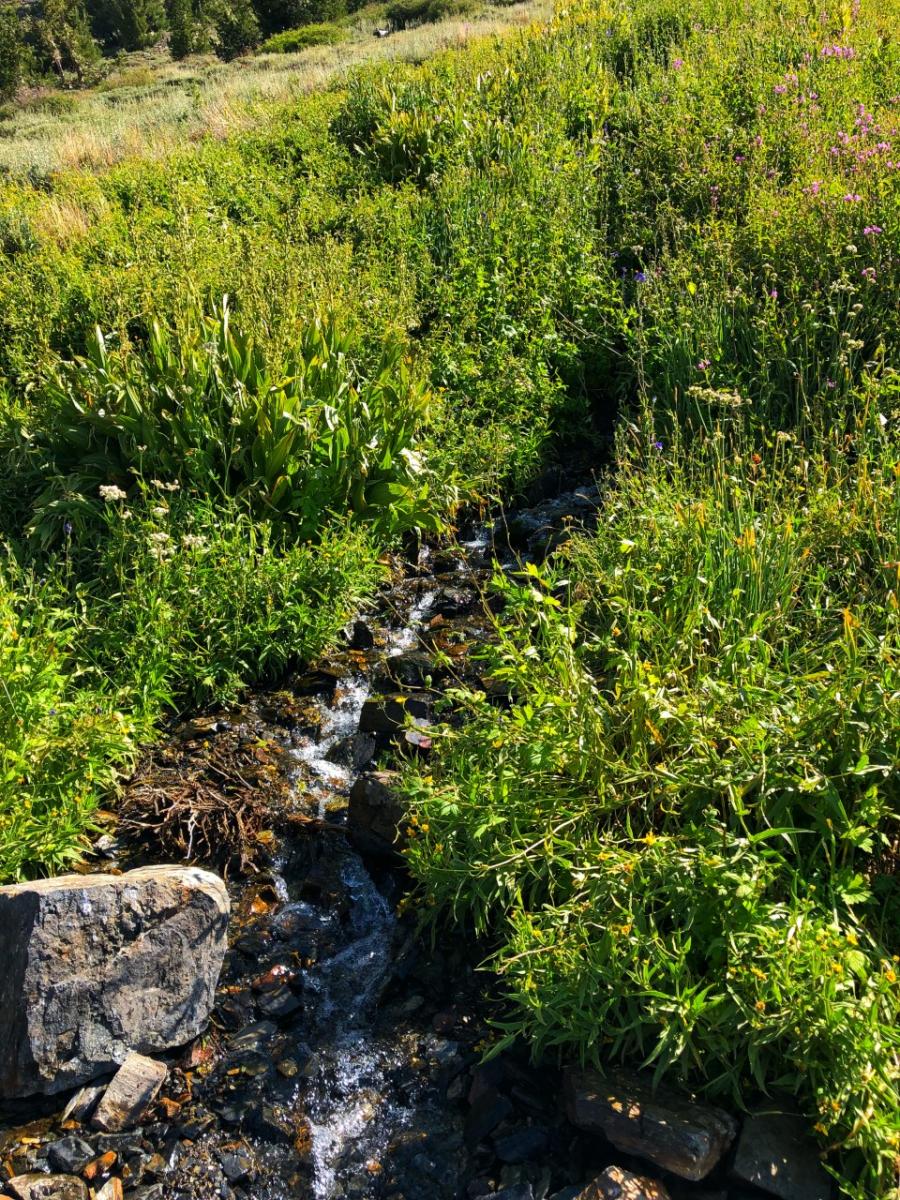The Benefits of Nature for Stress Relief

We all recognize that we are living through a scary and stressful time right now. As adults and parents, we try to keep things as normal and calm for our children as we can, but we also know that our kids pick up on the emotions and stress that we are feeling as well.
The other day I realized that my son was exhibiting some classic signs of stress; his sleep pattern is completely out of whack, (trouble falling asleep at night, trouble staying asleep, bad dreams and napping within an hour of waking up), he’s not eating like he usually does, (there’s still snacks in my cabinets and it’s been a week since I went to the grocery store!), he’s moody and emotional over things that wouldn’t normally bother him, and he’s just not himself.
To help him kind of re-center himself and be in a place where we can work through some of the stressful things he’s been feeling and experiencing, I had him come play the Nature Listening Game with me that we used to play about once a week when he was little.
Here’s how to play:
• Find a space outside where you can both sit or lay down comfortably next to each other. This can be in a yard, on a balcony or patio, in a park, or while out hiking. We chose to use lounge chairs in the backyard.
• Have everyone close their eyes and just breathe for a couple minutes. You can talk your child through this by having them breathe in through their nose while you slowly count to three and breathe out through their mouth for a count of three.
• After a couple minutes, in a calm and softer tone, take turns telling each other what you hear without opening your eyes. For example; “I hear the wind move the leaves in the trees/ I can hear a dog barking/ I hear an airplane overhead.” Then ask them what they hear. Go back-and-forth telling each other what you hear. It’s ok to mention the same things to each other. This is about helping to center and calm yourselves and just connect with the sounds that are around you.
• Do this exercise for as long as you are both enjoying it.
We would often play the listening game in the evening right before bath time to help settle my kids’ brains and relax before our bedtime routine. Now that my son is a teenager he still finds the game relaxing and grounding when going through tougher times and feeling stressed. I love the benefit of it being relaxing and grounding for me as well.
 Many experts including some pediatricians are recognizing how being in, and connecting to nature is a stress reliever for children, (and their caregivers). In an article by Danielle Cohen for The Child Mind Institute, Cohen offers this explanation for why getting out in nature can be a stress and anxiety reducer for children: “It reduces stress and fatigue. According to the Attention Restoration Theory, urban environments require what’s called directed attention, which forces us to ignore distractions and exhausts our brains. In natural environments, we practice an effortless type of attention known as soft fascination that creates feelings of pleasure, not fatigue.”
Many experts including some pediatricians are recognizing how being in, and connecting to nature is a stress reliever for children, (and their caregivers). In an article by Danielle Cohen for The Child Mind Institute, Cohen offers this explanation for why getting out in nature can be a stress and anxiety reducer for children: “It reduces stress and fatigue. According to the Attention Restoration Theory, urban environments require what’s called directed attention, which forces us to ignore distractions and exhausts our brains. In natural environments, we practice an effortless type of attention known as soft fascination that creates feelings of pleasure, not fatigue.”
Not only does being in nature reduce stress, but it also reduces the feelings of anger and fear as well as physical symptoms of stress like elevated heart rate and blood pressure, muscle tension, and the production of stress hormones in the body. Basically, experiencing nature helps children and adults cope with pain by soothing and distracting us from the physical discomforts of our stress, while lowering the amount of stress hormones our bodies produce.
There are lots of ways to get the benefits of stress reduction in nature. It is not a requirement that you have to go find a hiking trail or secluded mountain top to be in nature. Nature can be found anywhere outside where there are plants, flowers, trees, or large open spaces. Nature spaces can be the beach, a field, a park, or a small container garden. Anything you do in nature can be beneficial to stress reduction.
Here’s a list of activities that range from things that can be done in your yard, a local park, or a family road trip:

• Go on a bug hunt – search for interesting insects under leaves or rocks.
• Art projects – being outside can offer easy clean up after creating.
• Take a walk or hike – go out and see what you can see.
• Take the dog for a walk – pets need time in nature too.
• Go on a picture safari – go for a walk and have your child take a photo of one plant/flower/tree in each yard you pass. When you get home, sit together outside and look through the pictures.
• Stack rocks – rocks and stones can be stacked on top of each other to make interesting towers or shapes. Small to medium rocks work best and help children develop special recognition and fine motor skills.
• Take homework/schoolwork outside – studies have shown that doing academic work outside can often help with concentration in children.
• Bath time – for toys, that is! Give children a bucket or bowl of soapy water and sponges or brushes and let them give their toys (or the patio furniture) a bath.
• Have a picnic – pack up lunch or dinner and have a picnic at the park, beach, or in your own yard.
• Go camping – your backyard is a great place to pitch a tent if getting away to the mountains, beach, or desert just isn’t in the cards right now.
• Build a birdhouse – you can do this with a DIY kit or toilet paper tube, nut butter, and birdseed.
• Start (or help maintain) a garden – gardens can be a big spot in the yard with veggies and flowers or a few containers/pots on the porch or even in the house.
You can also add the Nature Listening Game to this list so it can be one more tool in your bag of tricks to help combat the stress and anxiety you and your children are facing during a crazy time. There are so many other activities that can be done outside. What are you doing to explore the benefits of nature? Tag us on social media and let us know!

